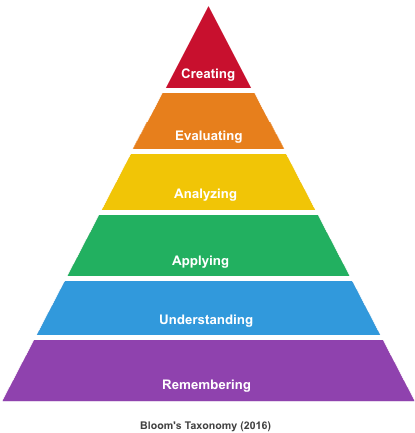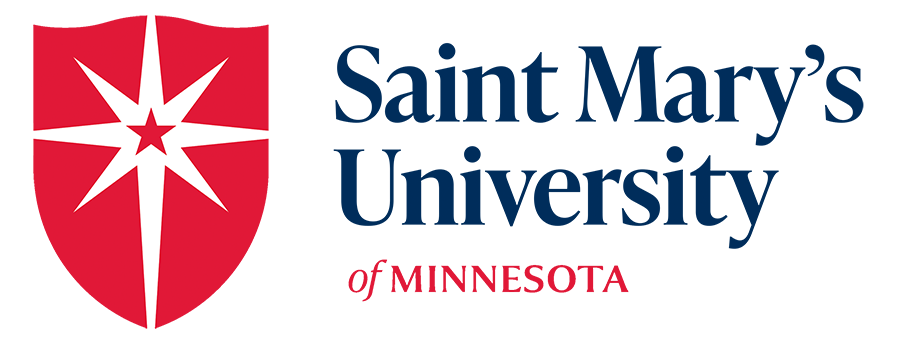
Creating Assignments
Your Student Learning Objectives
This is the easy part. Saint Mary’s already wrote and approved your student learning objectives and course description, so you just need to use them as they are written in the SGPP Catalog and Handbook.
You can use your course description and student learning objectives to create assignments, topics, and activities. Your course description is a short paragraph that describes the purpose of the course, and the student learning objectives are the knowledge and skills that students will obtain by the end of the course.
Use Bloom’s Taxonomy to understand your learning objectives.
Our student learning objectives were drafted according to Bloom’s Taxonomy as illustrated below. Bloom’s Taxonomy helps you identify the level of thinking required for your students. As you travel up Bloom’s Taxonomy, the thinking levels become more complex. Look at the verbs used in your learning objectives, and pay close attention to the level of thinking each represents. Graduate programs tend to be placed at higher levels of thinking whereas bachelor programs are placed at low to mid levels, with a few aimed at the higher levels.

Creating Assignments That Evaluate Student Learning
Your assignments will help you evaluate student learning. During your course, your students will, in varying degrees, demonstrate the knowledge and skills articulated in your student learning objectives. Therefore, your assignments should match your student learning objectives. For example, here are 5 student learning objectives for a 2 credit course titled “Instructional Skills”:
- Describe and apply learning theory
- Apply the learning theory in personal and professional arenas
- Create instructional goals and objectives
- Teach a unit of instruction
- Evaluate the effectiveness of the instruction
Based on the sample student learning objectives above, the following three course assignments could be created:
- Instructional Scenario Critiques
Given 3 short instructional videos, identify the instructional goal, how learning theory is being applied, and the overall effectiveness of the instruction. Cite concepts from the course readings. (SLO 1, 3, 5) - Instructional Plan
Create a 2 page instructional plan for a 90 minute training session applicable to your professional field. Identify the instructional goal and objectives, method to assess the learning, and basic description of the instructional strategies. Include a rationale for its design based on concepts from the textbook readings. (SLO 1, 2, 3, 4, 5) - Teaching Project
Working with a fellow student, design an instructional plan for a 15 minute learning experience relevant to your chosen field. Include a rationale for its design based on concepts from your textbook. You and your partner will use this plan to provide a teaching demonstration in class, as well as, evaluate the learning outcomes. (SLO 1, 2, 3, 4, 5)
Did You Notice?
Each assignment measures the student learning objectives, building upon the previous assignment. The assignments are designed to provide choice and are relevant to the students’ adult professional lives. Try to do the same when designing your assignments.
